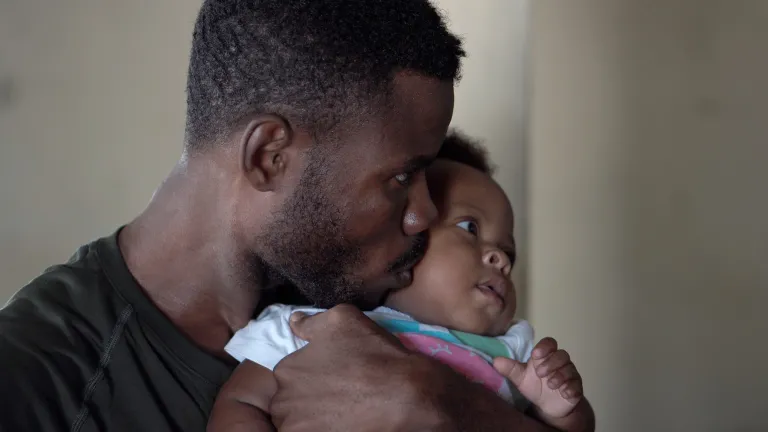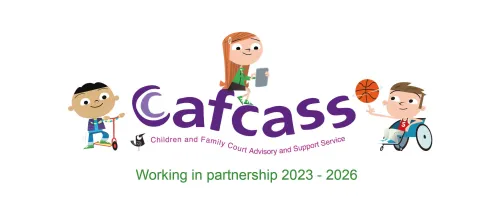
Planning Together for Children is a course that supports parents to think about the needs of their children first when they are working out how they can parent together, as they are separating and/or they are living apart. It supports parents to think carefully about what is in the children’s best interests and to do their best to work together to protect children against some of the harmful effects of parental conflict.

Planning Together for Children encourages parents to think about how they can communicate and work together to agree parenting arrangements without the need for more court hearings.
The course helps parents, or those who care for children, to understand how disagreements and arguments can affect children.
When is Planning Together for Children a good idea?
- When parents are not together and want the best for their children.
- When parents find it difficult to focus on their children’s needs because of ongoing difficulties in their relationship with one another.
- When feelings and reactions to separation are affecting the parents’ ability to communicate about their children because they are under stress.
- When the court and/or Cafcass have no current safeguarding concerns about children or parents.
- When mediation is considered an option to make the best arrangements for the children.
What does Planning Together for Children involve?
There are three stages to Planning Together for Children.
The first stage is for parents to complete an e-learning course online and in their own time (taking up to two hours). The self-directed e-learning focuses on topics such as what happens if parents go to court, understanding and managing emotion, how separation affects children, and looking at things from a child’s point of view.
Once complete, parents must take part in a workshop with other parents for more learning and discussion. These workshops are usually delivered online but can be in person if needed. They cover topics such as understanding the impact of conflict on children, how separation affects children, and communicating in positive ways with each other.
Finally, the course introduces parents to an interactive online parenting plan. The plan encourages agreement over sharing the care and support of children. Parents are encouraged to share the plan in a way that is understandable to the children. For some parents, there may also be a follow-up phone call from a trainer up to six weeks after the workshop; this is to see how things are working out.
Planning Together for Children links to...
- An interactive parenting plan, which allows parents to make agreements over important aspects of their parenting relationship with each other, and how they can best support their children together.
- The Parenting Together web pages, which give parents and families access to a range of information and educational programmes to help families understand the needs of children when parents separate, and the impact of conflict on them.
How do parents take part in Planning Together for Children?
Parents may be ordered, or directed, to complete Planning Together for Children by a family court.
A Family Court Adviser may also refer parents to complete Planning Together for Children before the first hearing in court, or afterwards.
How is Planning Together for Children delivered?
Action for Children coordinates the arrangements for Planning Together for Children on behalf of Cafcass. Action for Children works with different partner organisations across the country to offer Planning Together for Children directly to parents.
Action for Children, or one of its partners, will contact parents to support them through the process.
The group workshops are offered to mixed groups of parents in a two-and-a-half-hour session. There will be up to six parents in any one workshop.
Parents will not attend the same group as the other parent of their children.
Parents must complete the e-learning before participating in the group workshop.
Children are not permitted to attend. Please note – information that parents share during the course is confidential unless there are any concerns about the safety of a child or an adult, in which case the trainer will contact the parents concerned to share next steps.
What happens when a Planning Together for Children referral is made?
When a parent is referred to Planning Together for Children, they will receive an email asking them to create an account in the Planning Together for Children ‘Parent Hub’. This is where parents can make a start on their e-learning.
Action for Children, or one of its partners, will also contact the parent, welcoming them to Planning Together for Children and giving them the chance to book onto a group workshop.
Within the Planning Together for Children ‘Parent Hub’ there is also a link to the parenting plan which parents can start to use whenever they are ready.
Do families have to pay for Planning Together for Children?
There is no cost to those who are referred by Cafcass or directed by the court to complete Planning Together for Children.
Parents cannot refer themselves to the Planning Together for Children course.
How is progress through the course recorded?
The Planning Together for Children ‘Parent Hub’ will record what learning has been completed and when. The Family Court Adviser and court will be notified if parents are unable to complete the course, so they can consider next steps.